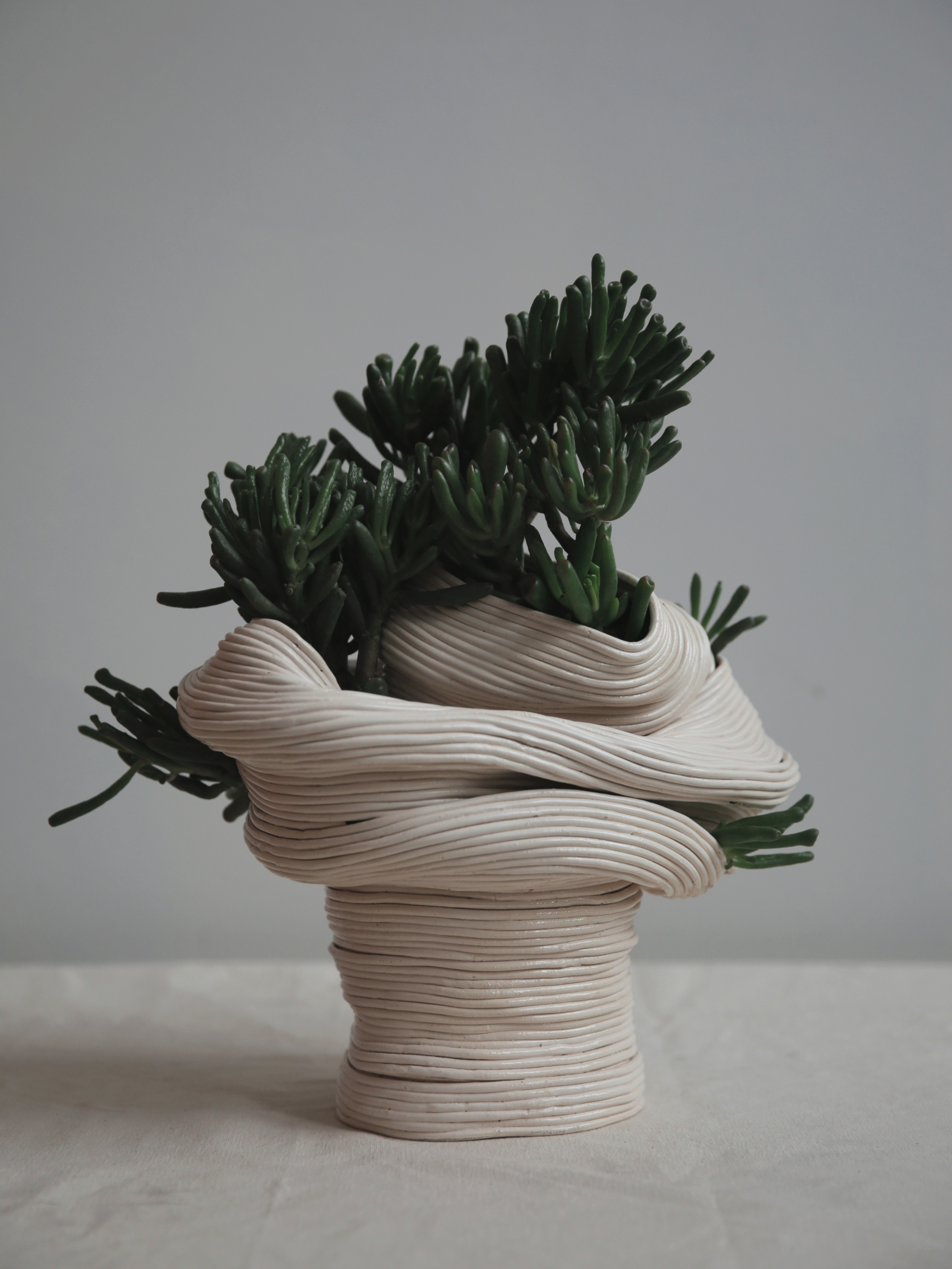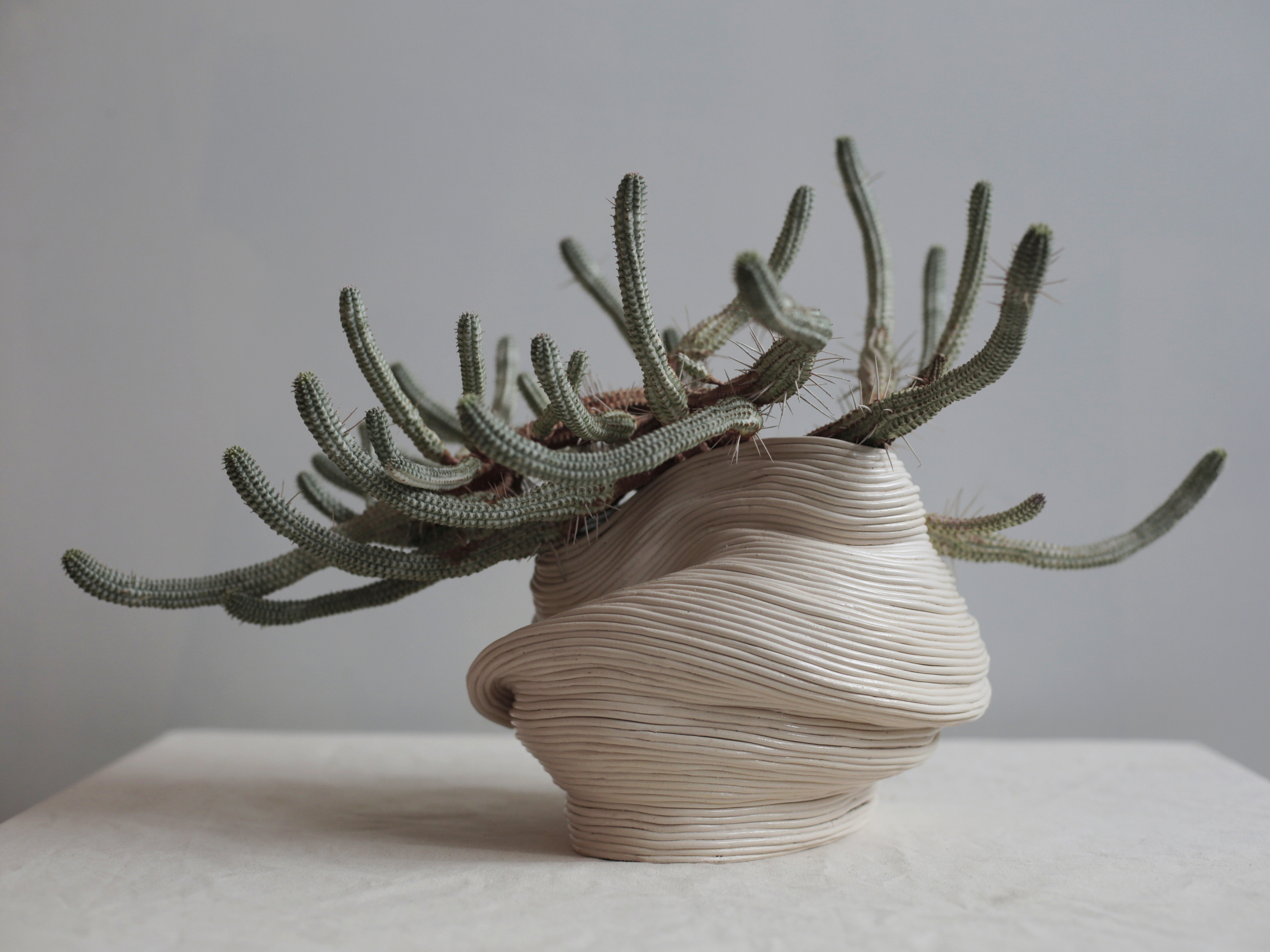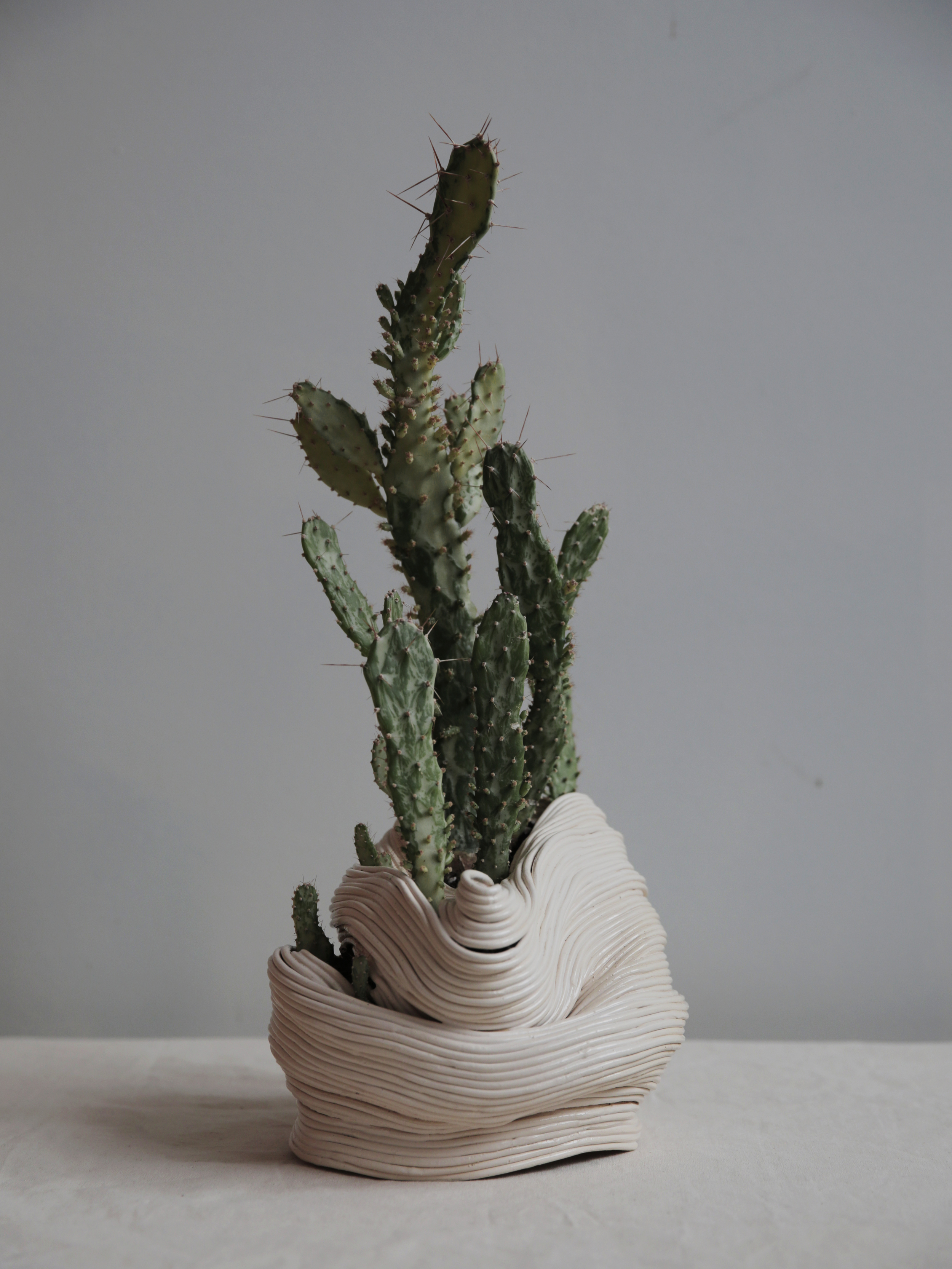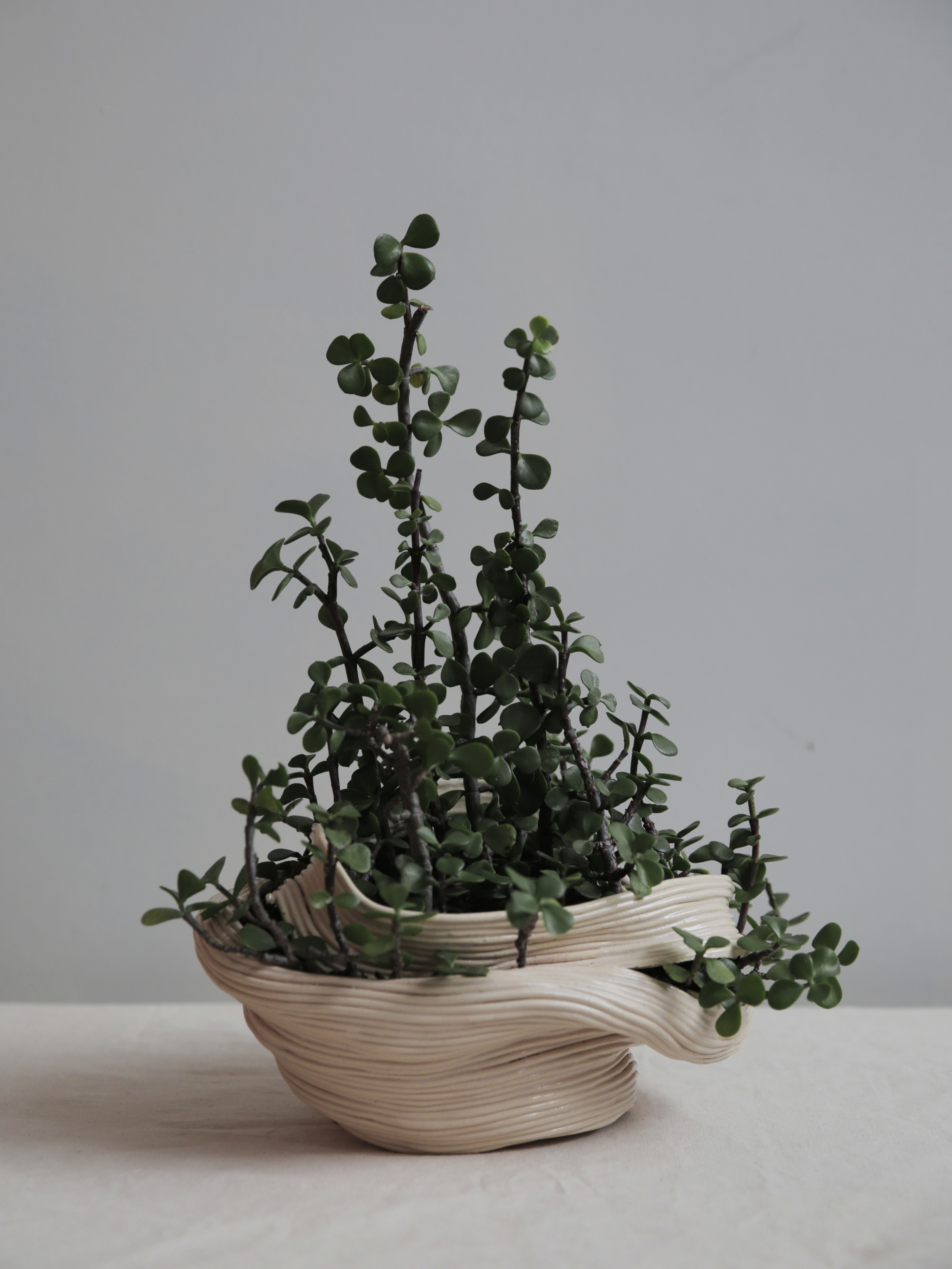植物繕い (Plantsukuroi)
The initial concept for this body of work was a response to the rise in popularity of 3D printed ceramics. Corresponding to biomimicry - the imitation of models or systems of nature, I wanted to see how forms would turn out if I copied the way the 3D printer mound coils on top of each other with my hands. Vessels are built through stacking, folding, pressing, pulling and these actions are often dictated by the weight of moist clay. Forms emerge intuitively and seem to ebb and flow in the manner in which they are made, often pushed to their structural limits. Unlike the machine, I am able to detect the slightest change in the properties of the clay body under different environmental conditions. This insight into plasticity and workability, which can only be obtained by spending time with the physical matter through play and observation, allows me to work with and manipulate the material. In the absence of firmware or a mechanical process, no two vessels can be the same- this project is a celebration of the artist's hand in the age of automation.
Without formal training in ceramics, the self-formulated coiling technique often leads to breakage and misconstruction during the building, drying and firing stages. This unforeseen circumstance thus incited the project to embrace the Japanese philosophy of wabi-sabi - the acceptance of transience and imperfection. Further research inspired the project to adopt the practice of kintsukuroi (金繕い) – the art of mending broken pottery with gold lacquer. As the name of the project suggests, plant life is used instead to fill and embellish the cracks; subsequently the works becomes living organisms and will grow and evolve for years to come. Failures are not concealed but rather highlighted and aestheticised, embodying the sustainability of 'visible repair'. Seemingly unremarkable imperfections are reexamined with a new and unexpected appreciation.
This project was part of the exhibition Wonky at Tinning St, Brunswick 14-24 July 2016.




Reclining vessel, 2016
Ceramic with Aeonium Arboreum.